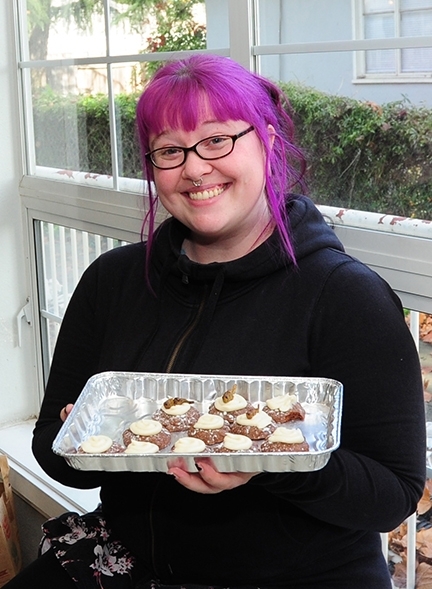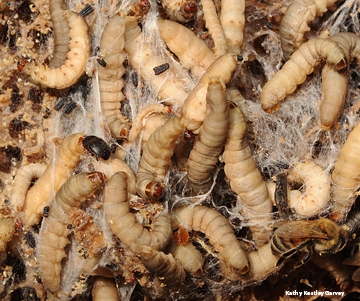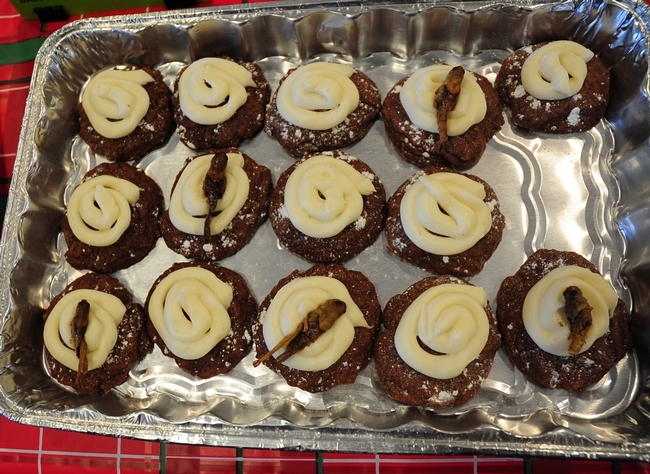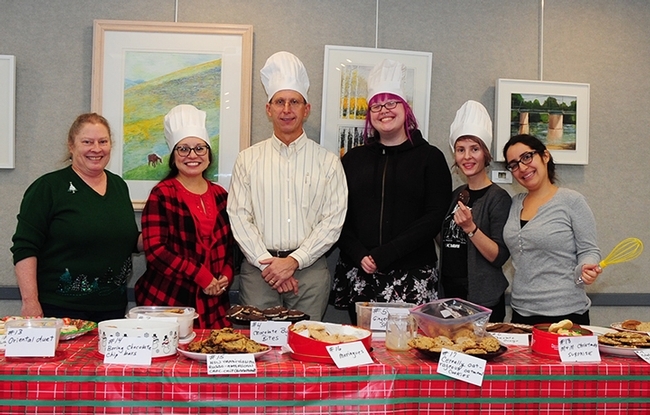
Well, at some dinners. In. Many. Parts. Of. The. World.
Distinguished professor Bruce Hammock of the UC Davis Department of Entomology and Nematology and UC Davis Comprehensive Cancer Center just shared with us "Bugs: They're What's for Dinner!" (not the bugs, the news story).
The gist of the piece, appearing in a recent edition of the Chemical and Engineering News: Gladys O. Latunde-Dada of King's College, London, found that if you eat crickets, you'll get almost as much iron as eating a sirloin steak. She and her research team studied four common food insects: grasshoppers (Sphenarium purpurascens), crickets (Gryllus bimaculatus), mealworms (Tenebrio molitor), and buffalo worms (Alphitobius diaperinus), a type of beetle larvae. Of the four insects, crickets scored highest for the total iron content--a whopping 12.91 mg/100 g. just shy of beef sirloin's 15-47 mg/100g.
Yum? Double yum?
Hold on!
Crickets and grasshoppers also make for an award-winning cookie. Think "Chocolate Chirp Cookies," the top winner in the UC Davis Department of Entomology and Nematology's holiday cookie contest. They were the work of graduate student Heather Baker, who studies malaria mosquitoes in the lab of molecular biologist Shirley Luckhart.
Oddly enough, no one attending the social mentioned anything about the iron content in the "Chocolate Chirp Cookie."
Or how delicious they were.
Baker's cookie, made with cricket flour and topped with a grasshopper, won the "Most Innovative" category. She received a chef's hat, a $25 gift certificate to UC Davis Stores, and "The Golden Teaspoon Award."
Baker said she based her entry on a Pioneer Woman recipe but added cricket flour instead of "regular" flour. The grasshoppers? "I ordered them through Amazon," she said.

Does she eat insects regularly? "I can't say I eat insects regularly, ha, ha, although I'm always down to try them as a novelty!" Baker said. Her favorite? "My favorite so far is chocolate-covered ants."
The eating of insects, entomophagy, common in many countries throughout the world, is gaining momentum in the United States. "I've seen a number of articles touting insects as the 'future of meat,' because they contain a lot of protein and amino acids and are a very sustainable food source," she said. "They require much less water and space than animal farms, and insect farming emits far fewer greenhouse gases. Unfortunately, companies offering insect-based products are still developing the infrastructure to raise human food grade insects on a large scale, so a lot of these foods are incredibly expensive. The cricket flour alone costs $40-plus per pound!"
Of the 20 entries at the entomology/nematology social, Baker's cookies were "on the judges' short list in every category" in addition to her winning "Most Innovative," said contest coordinator Guyla Yoak. Thus, the awarding of The Golden Teaspoons...
The judges--professor Diane Ullman, emeritus professor Hugh Dingle, faculty affiliate Steve Seybold and account manager Wayne Monteiro—awarded four other first-place prizes.
- Steve Nadler, professor and chair of the department, won “Best Taste Without Chocolate" with his “Citrus Cranberry Walnut Cookies.”
- Junior specialist Stacey Lee Rice, who studies bagrada bugs in the lab of Extension entomologist Larry Godfrey, won “Best Taste with Chocolate” for her “Chocolate Bug Bites.” (No bugs. No bagradas. Just chocolate.)
- Account manager Elvia Mayes' entry, “Merry Minnies” cookies, scored “Best Decorated."
- Graduate student/mosquito researcher Mimi Portilla of the lab of aquatic entomologist Sharon Lawler, won “Best Entry Name” for her “Cereally Oatrageous Oatmeal Cookies.”
Unfortunately, most of the "chocolate chirps" went uneaten.
That's not to say the scientists who study bugs don't like bugs. They do. They just don't eat them. Generally.
One noted exception: those pesky wax moth larvae in bee hives.
"Wax moth larvae, when fed honey and baby food are delicious!" Hammock declared. "They taste just like cream of wheat with honey on it."
Attached Images:

Chocolate Chirp Cookies, the work of Heather Baker, UC Davis graduate student studying malaria mosquitoes. (Photo by Kathy Keatley Garvey)

UC Davis Department of Entomology and Nematology cookie social! From left: account manager Guyla Yoak, contest coordinator; and winners Elvia Mayes, account manager; Steve Nadler, professor and chair of the department; Heather Baker, graduate student/mosquito researcher of the Shirley Luckhart lab; Stacey Rice, junior specialist of the Larry Godfrey lab; and Mimi Portilla, graduate student/mosquito researcher of the Sharon Lawler lab. (Photo by Kathy Keatley Garvey)